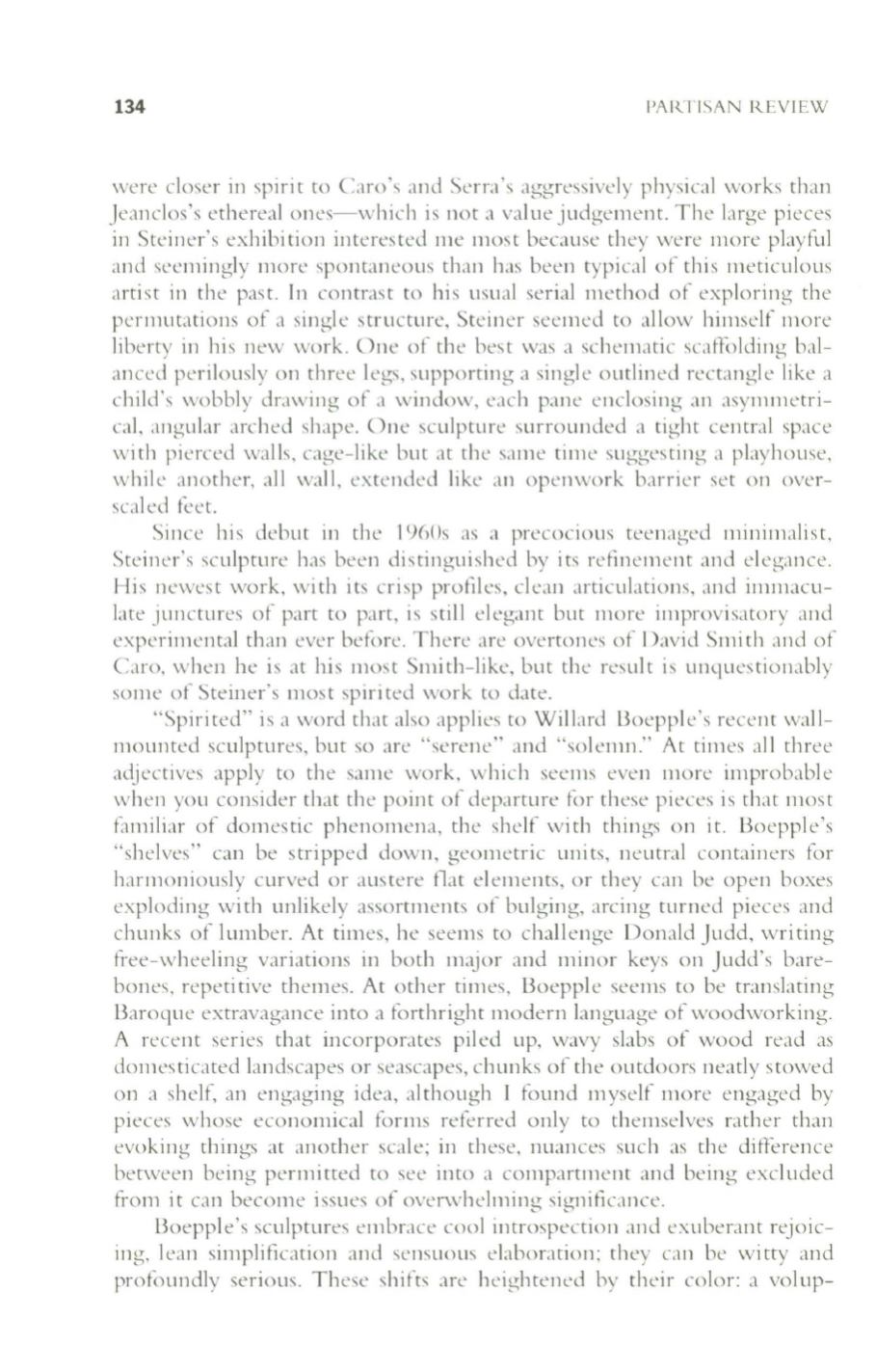
134
PARTISAN REVIEW
wcrc closer in spiri t to Caro's and Scrra's aggressively physical works than
Jeanclos's ethereal ones-which is not a value judgcmeIlt. Thc large pieces
in Stciner's exhibition intcrested me most because they wcrc more playful
and secmingly more spontaneous than has been typical of this meticulous
artist in the past. In contrast to his usual serial method of exploring the
permutations of a single structure, Steiner seemcd to allow himself more
liberty in his new work. One of thc best was a schematic scaffolding bal–
anced perilously on three legs, supporting a single outlined rectangle like a
child's wobbly drawing of a window, each pane enclosing an asymmetri–
cal, angular arched shape. One sculpture surrounded a tight central space
with pierced walls, cage-like but at the same time suggesting a playhouse,
while another, all wall, extcndcd Iikc an openwork barrier set on over–
scal ed fcet.
Since his debut in thc
J
l)6()s as a precocious teenaged minimalist,
Steiner's sculpture has been distinguishcd by its refinement and elegance.
His ncwest work, with its crisp profiles, clean articulations, and immacu–
late junctures of part to part, is still elegant but more improvisatory and
experimcIltal than ever before. There are overtoncs of ])avid Smi th and of
Caro, when he is at his most Smith-like, but the result is unquestionably
some of Steiner's most spirited work to date.
"Spirited" is a word that also applics to Willard 13oepple's recent wall–
mounted sculptures, but so are "sercne" and "solemn." At times all three
adjectives apply
to
the same work, which seems even morc improbable
when you consider that thc point of departure for these picces is that most
familiar of domestic phenomcna, thc shelf with things on it. 13oepple's
"shclves" can be stripped down, geometric units, neutral containers for
harmoniously curved or austere flat elements, or they can be open boxes
exploding with unlikely assortments of bulging, arcing turned pieces and
chunks of lumber. At times, he seems to challenge ])onald Judd, writing
free-wheeling variations in both major and minor keys on Judd's bare–
boncs, repetitive themes. At other times, 130epple seems to be translating
13aroque extravagance into a forthright modern language of woodworking.
A recent series that incorporates piled up, wavy slabs of wood read as
domcsticated landscapes or seascapes, chunks of the outdoors ncatly stowed
on a shelf, an engaging idea, although I found myself more engaged by
pieces whose economical forms referred only to themsclves rather than
evoking things at another scale; in thcse, nuances such as the difference
between being permitted to see into a compartmeIlt and being excluded
from it can become issues of overwhclming significance.
13ocpple's sculptures cillbracc cool introspcction and cxuberant rejoic–
ing, lean simplification and scnsuous claboration; they can be wi tty and
profoundly serious. These shifts arc hcightencd by thcir color: a volup-


